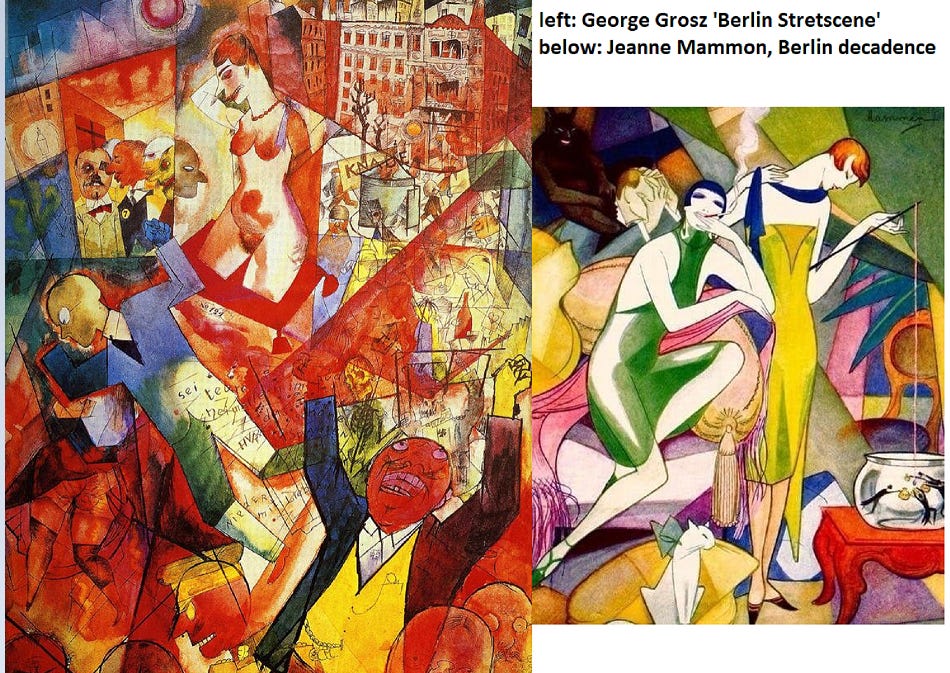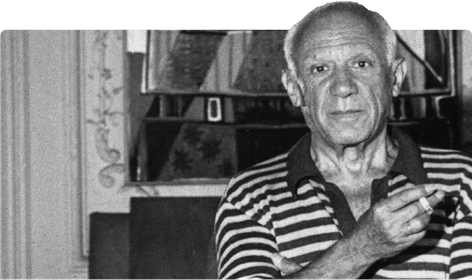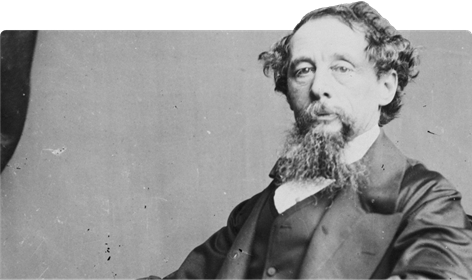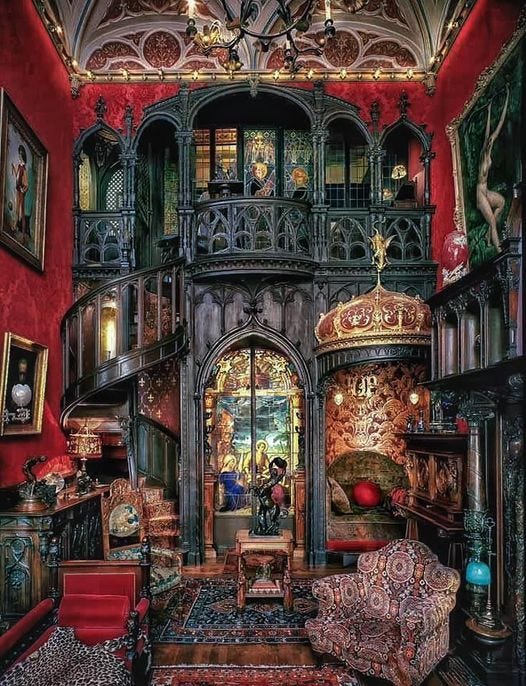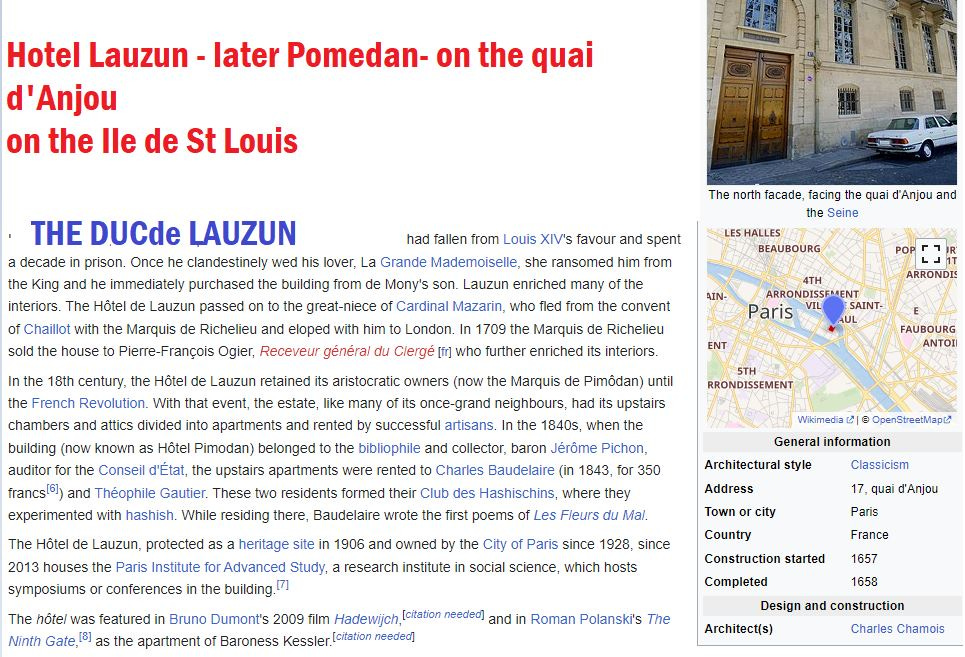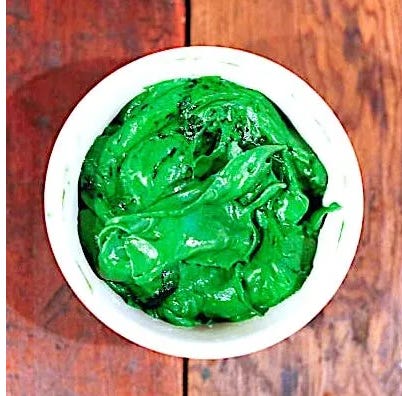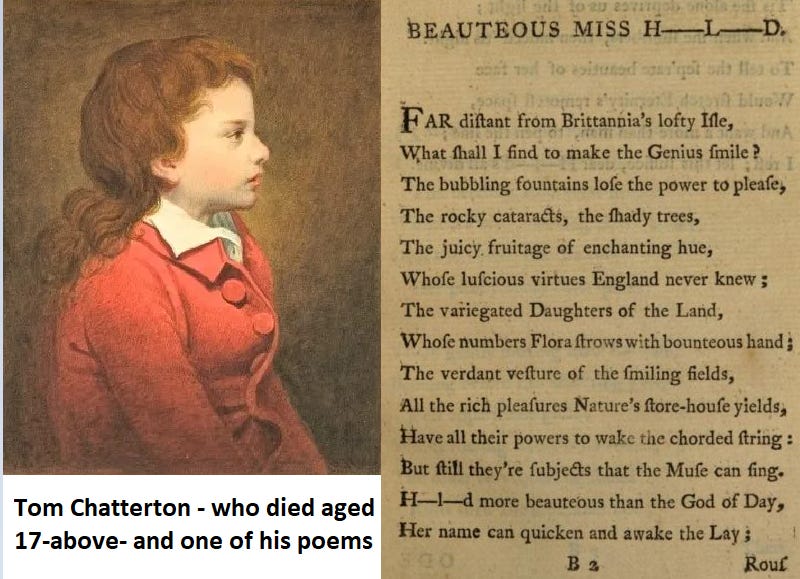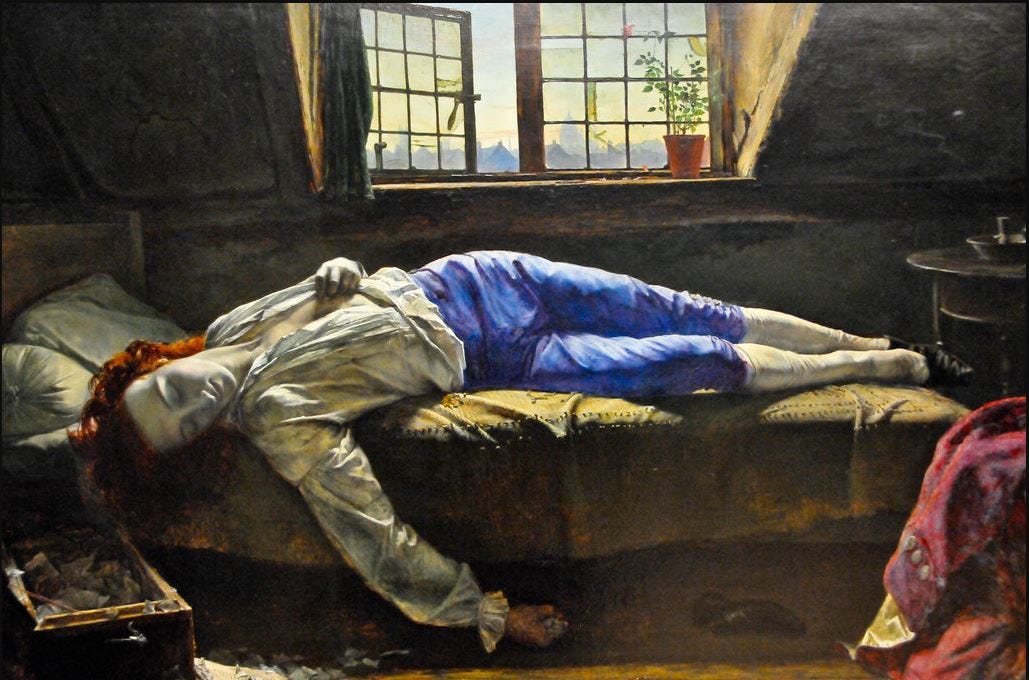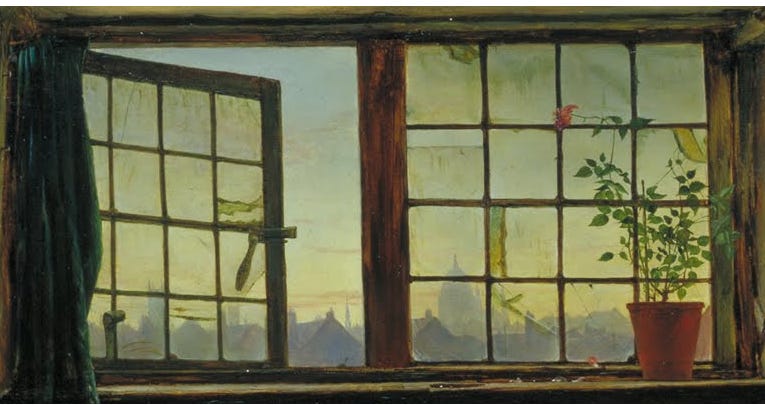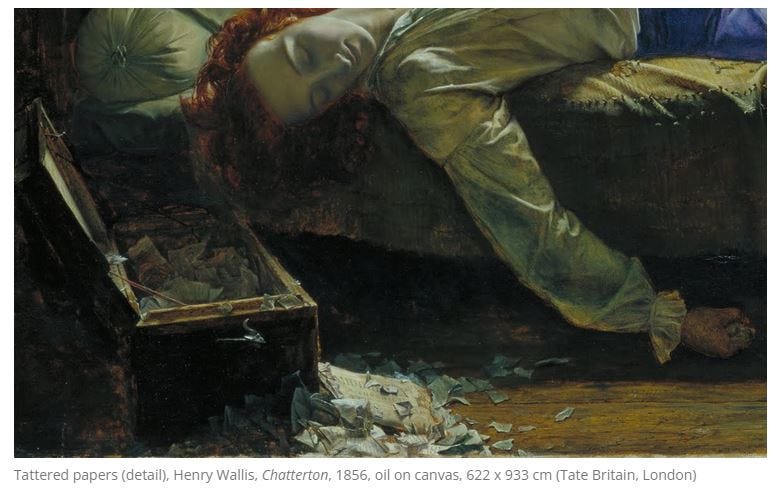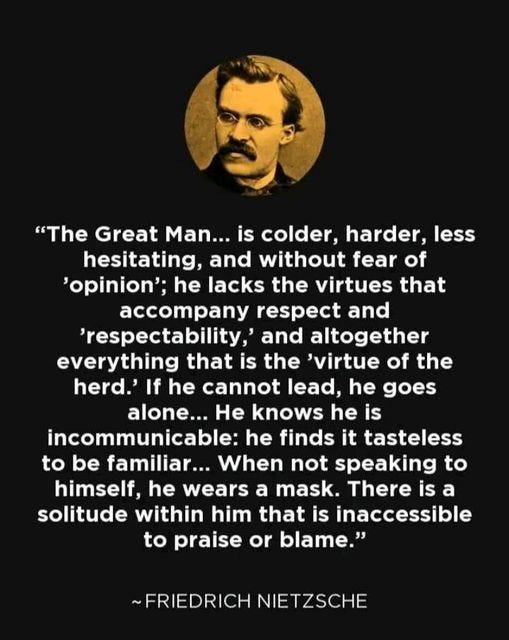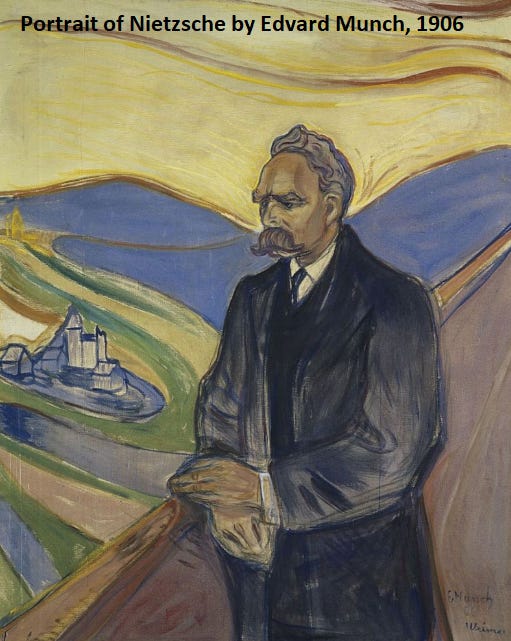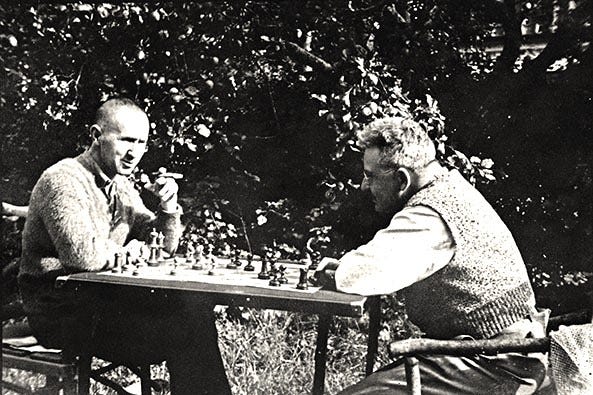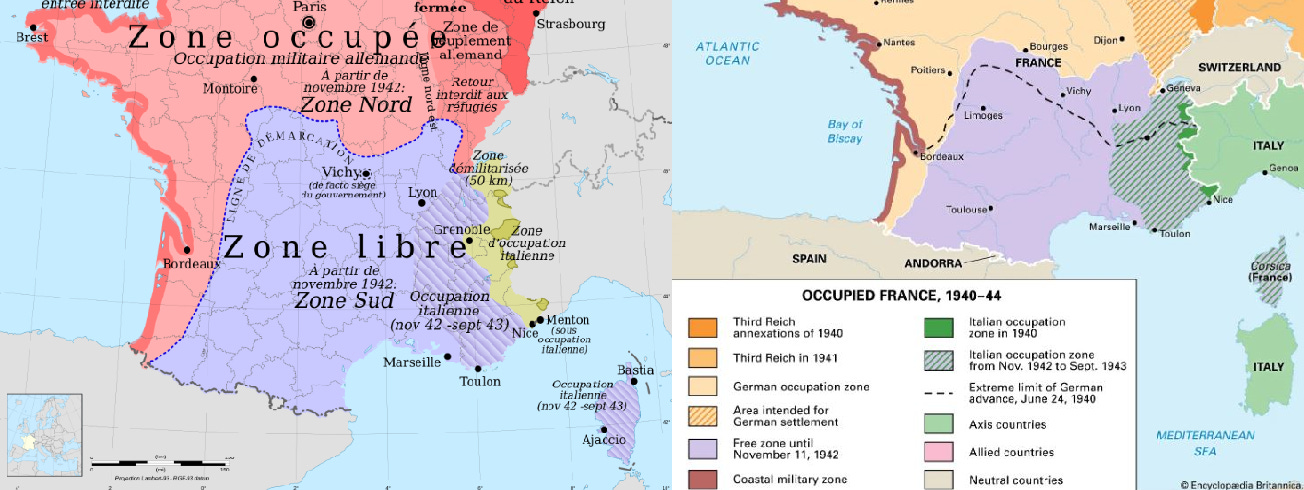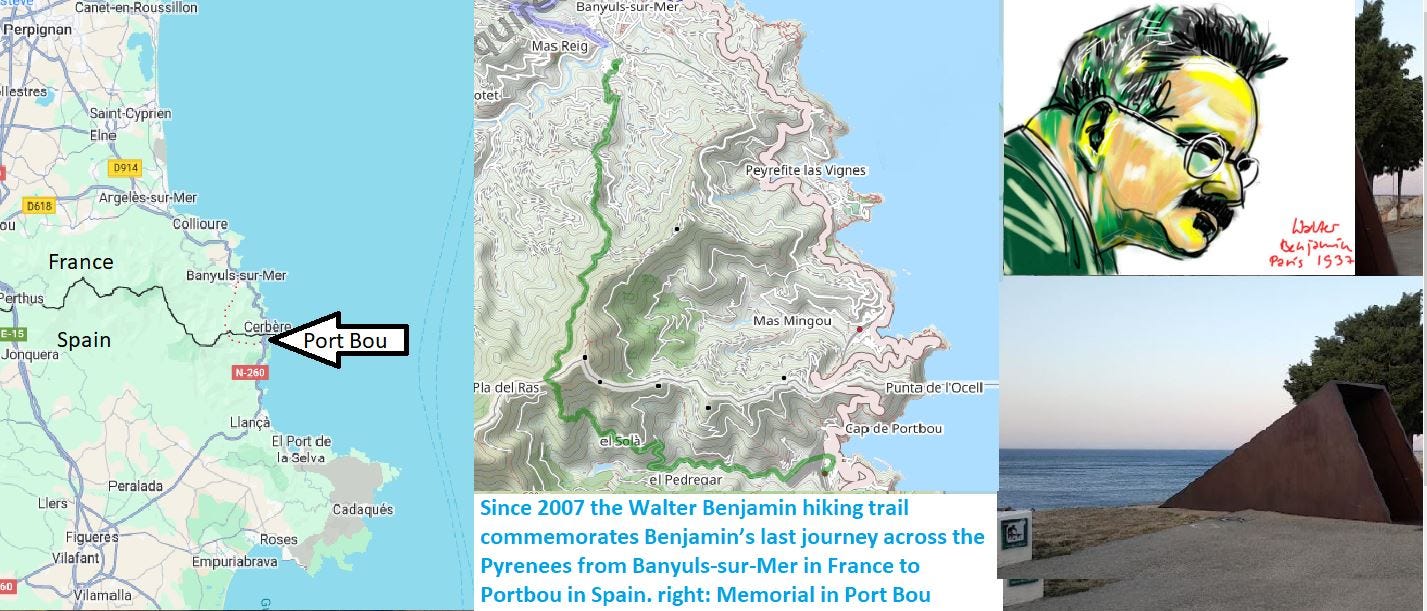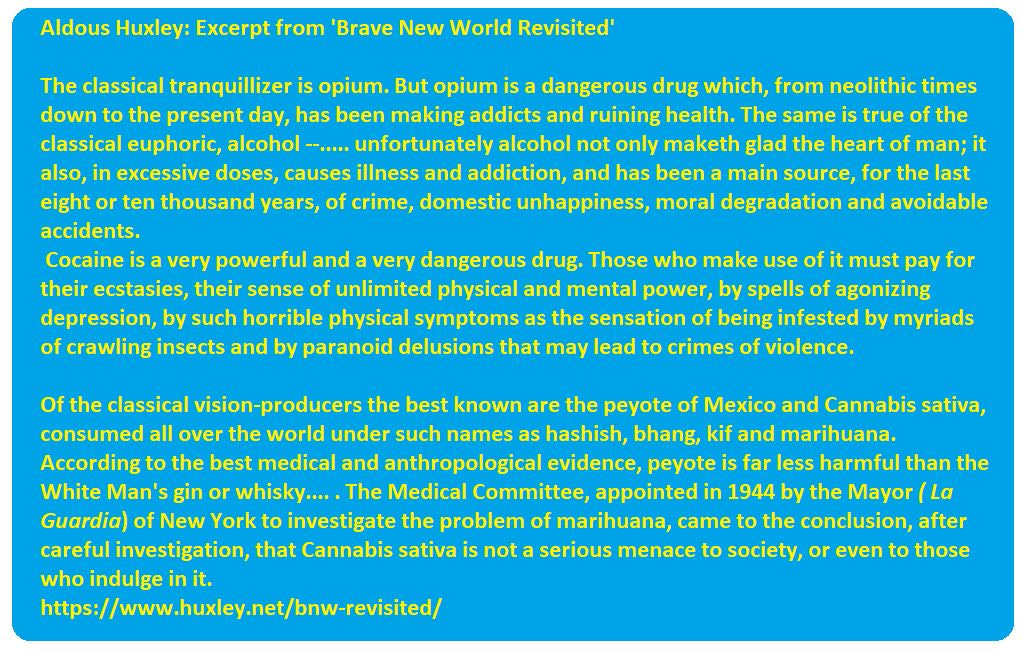LEGACY OF THE TITAN pt 11: Opium in the period before the Harrison Act- the ARTS
To gauge the extend of caesura the Harrison Act represented- not only to medical practise but life in general: here is a look at a few artists
There are many other artists I could include here, from William Burroughs to many French and German artists between 1870 and 1930. It is said the excesses of the 1960s in New York and on the Westcoast pale in comparison to what went on in Berlin in the decade before Hitler took over in 1933 during the 1920s.
.
1797/98: Samuel Coleridge (1776 to 1834) writes ‘Kubla khan’ ( which ends in ..’ and close your eyes with holy dread, for he on honey-dew hath fed, and drunk the milk of Paradise.’) and the ‘Rime of the ancient mariner’.
Although Coleridge mostly kept his opium use as hidden as possible from those close to him, it became public knowledge with the 1822 publication of Confessions of an English Opium Eater by his close friend Thomas De Quincey.
The Confessions painted a rather negative picture of Coleridge.
In the ‘Confessions’ the original opium eater had written: O just and righteous opium! … thou bildest upon the bosom of darkness, out of the fantastic imagery of the brain, cities and temples, beyond the art of Phidias and Praxiteles – beyond the splendours of Babylon and Hekatómpylos; and, “from the anarchy of dreaming sleep,” callest into sunny light the faces of long-buried beauties … thou hast the keys of Paradise, O just, subtle, and mighty opium![2]
In his public persona, Coleridge subsequently drew a connection between his creative work and opium usage. Desperate for some financial success with his poetry, Coleridge seems to have intentionally attempted to portray himself as a dreamy opium-eater because he might have believed that it would draw a morbid fascination to his work. From 1816 he mostly lived in the household of Highgate Doctor Gilman who admired his poetry and helped to control his opium intake. Thanks to Gillman’s treatment and friendship Coleridge’s produced his later prose works, particularly his Biographia Literaria, Lay Sermons, and Opus Maximum.
From ca 1820: British writers like Keats and De Quincy experimented with opium.
Below: from H.Wayne Morgan’s ‘social history of Drugs in America 1800to 1985’. I will return to this quote at a different point about the real motives of the Harrison Act: it seems the reviewer of De Quincey’s work wasn’t so wrong after all: the suddenly perceived and promoted threat to the nation from opiate addicts was not borne out by actual numbers. ( As confirmed by the research of David Courtwright and David Musto. There were other quarters of society with motives of their own to dramatize the opiate use. And a large number of habitues managed to lead a stable and regular life.
In 1848, just six years after the First Opium War (1839-42) and following several devastating cholera waves across Britain, with opium being widely used to combat epidemics and disease—it also altered artists’ perceptions of the world and played an important role both in the development of Pre-Raphaelite’s composition and in forming the ideas of the Aesthetic Movement with its high focus, and depth of field.
Pablo Picasso was a Spanish painter, sculptor, and co-founder of Cubism. He lived in Paris in the 1920s, where he was influenced by the opium culture of the city. He and his friends would often smoke opium from a bamboo pipe and enjoy its effects on their creativity. However, he also witnessed the tragic death of his friend Karl-Heinz Wiegels, who committed suicide after an overdose of hashish and opium. He had lifelong fond memories of that period.
Charles Dickens was an English novelist and social critic who wrote classics like “Oliver Twist” and “A Tale of Two Cities”. He was addicted to laudanum, a narcotic derived from opium, which he used to treat his chronic pain and insomnia. He also experimented with cocaine, which he obtained from a pharmacist named John Snow. He wrote about his drug use in his letters and journals.34
Arthur Conan Doyle was a Scottish writer and physician who created the famous detective Sherlock Holmes. He was also fond of opium, which he used to cope with stress and depression. He wrote about his experiences with opium in his memoirs “The Story of My Life”. He also experimented with cocaine, which he obtained from Snow as well.
Charles Baudelaire (1821- 1867) is best known for his ‘fleur du mal’ poetry collection and being a sometime member of Dr Moreau’s ‘club des Hachichins’ at the Hotel Lauzun on the Isle St Louis in the heart of Paris. Members included Victor Hugo, Alexandre Dumas Gérard de Nerval, Honoré de Balzac,Theophile Gautier.
Below: Paris apartment inspired by Club des Hachichins in the Hotel Lauzun
In fact he was more into opium than hashish. He also worked as an essayist, art critic and translator of Edgar Allen Poe's poem "The Raven in 1865. In fact for most of his life this is what he was known for. Fame as poet arrived almost too late for him -and then carried the stench of suspicious decadence.
His father die in 1827,— his mum remarried. The stepfather— a painter and poet of modest talent who introduced Charles to art and the power of images —had begun his career as a priest but abandoned holy orders in 1793 and became a middle-ranking civil servant.
As a student Charles noticed his tendency to intense melancholy, and he became aware that he was solitary by nature. Regular acts of indiscipline led to his being expelled from the school. After the baccalauréat Baudelaire became a nominal student of law while in reality leading a “free life” in the Latin Quarter. There he made his first contacts in the literary world and also contracted the venereal disease that would eventually kill him. He celebrated the prostitute in some of his most affecting early poems.
In an attempt to remove Charles from such disreputable company, his stepfather sent him on a protracted voyage to India in June 1841, but Baudelaire effectively jumped ship in Mauritius and, after a few weeks there and in Réunion, returned to France in February 1842. The voyage and the tropics had deepened and enriched his imagination with exotic images and sensations.
Baudelaire came into an inheritance in April 1842 and, determined to become a poet rapidly spent it on a dandy lifestyle: clothes, books, paintings, expensive food and wines, and- hashish and opium, which he first experimented with in his Paris apartment at the Hôtel Pimodan (now the Hôtel Lauzun) on the Île Saint-Louis between 1843 and 1845 inthe form of Dawamesk-a North African mixture of pistachios, orange peel, butter, cinnamon, sugar, nutmeg, cloves & hashish.
Below: Dawamesk
From then until 1846 he probably composed the bulk of the poems that make up the first edition (1857) of Les Fleurs du mal. In October 1845 he announced the imminent appearance of a collection entitled “Les Lesbiennes” (“The Lesbians”), followed, at intervals after 1848, by “Les Limbes” (“Limbo”), the stated goal of which was to “represent the agitations and melancholies of modern youth.” Neither collection ever appeared in book form.
In 1847 Baudelaire published a novella entitled La Fanfarlo whose hero, or antihero, Samuel Cramer, is widely, if simplistically, seen as a self-portrait of the author as he agonizedly oscillates between desire for the ‘safe& respectable world’ of the maternal and Madame de Cosmelly and the erotic actress-dancer of the title.
In 1847 Baudelaire had discovered the work of Edgar Allan Poe. Overwhelmed by what he saw as the almost preternatural similarities between the American writer’s thought and temperament and his own, he embarked upon the task of translation that was to provide him with his most regular occupation and income for the rest of his life.
His translation of Poe’s Mesmeric Revelation appeared in July 1848.
Baudelaire’s growing reputation as Poe’s translator and as an art critic at last enabled him to publish some of his poems leading to the publication of Les Fleurs du mal in 1855- which brought him notoriety.
When a new collection of poems was published under the title of Les Fleurs du mal in 1857, 13 of its 100 poems were immediately arraigned for offences to religion or public morality. After a one-day trial on August 20, 1857, six of the poems were ordered to be removed from the book on the grounds of obscenity, with Baudelaire incurring a fine of 300 (later reduced to 50) francs.
Les Fleurs du mal became a byword for depravity, morbidity, and obscenity, and the legend of Baudelaire as the doomed dissident and pornographic poet was born.
The failure of Les Fleurs du mal, from which he had expected so much, was a bitter blow to Baudelaire, and the remaining years of his life were marked by a growing sense of failure, disillusionment, and despair.
He had a a brief and possibly botched physical liaison with Apollonie Sabatier, followed, in late 1859, by an equally brief and unhappy reunion with Marie Daubrun. Baudelaire wrote some of his finest works in these years- anticipating in an almost prophetic way the main elements of the Impressionist a decade before the actual emergence of that school or movement.
In 1860 he published Les Paradis artificiels, Baudelaire’s translation of sections of the English essayist Thomas De Quincey’s Confessions of an English Opium-Eater accompanied by his own searching analysis and —condemnation of drugs.
The autobiographical fragments entitled Fusées (“Rockets”) and Mon coeur mis à nu (“My Heart Laid Bare”) also date from the 1850s and early ’60s.
In 1861 Baudelaire made an ill-advised and unsuccessful attempt to gain election to the French Academy. In 1862 his publisher Poulet-Malassis -where he held some shares in- was declared bankrupt—and his financial difficulties became desperate.
By this time he was in a critical state both physically and psychologically, and feeling what he chillingly called “the wind of the wing of imbecility” pass over him.
In 1866 , increasingly embittered and impoverished, he was stricken with paralysis and aphasia - a defect in the expression and comprehension of language caused by damage to the temporal and the frontal lobes of the brain often caused by a stroke, or an infection. Baudelaire died at age 46 in the Paris nursing home in which he had been confined for the last year of his life.
Charlotte Bronte (1816-55) describes the effects of the drugged experience of Lucy Snowe in Villette (1853): In a land of enchantment, a garden most gorgeous, a plain sprinkled with coloured meteors, a forest with sparks of purple and ruby and golden fire gemming the foliage; a region, not of trees and shadow, but of strangest architectural wealth – of altar and of temple, of pyramid, obelisk, and sphinx: incredible to say, the wonders and the symbols of Egypt teemed throughout the park of Villette.
Today it is suggested that opium directly affected the highly detailed and depth of visions of Pre Raphaelite artists like Henry Wallis, John Everett Millais, Dante Gabriel Rossetti, Elizabeth Siddal, and James McNeill Whistler, which previously has been primarily attributed to the advent of photography.. Their close-up perspectives, controversial subject matter, Images of sleep and death and hyperrealist style caused –while referencing the pre Raphael era-- caused quite a sensation among the British art establishment at that time.
1835, Alfred de Vigny from a noble family, impoverished by the French revolution- writes a drama titled ‘Chatterton’,- probably inspired by his English wife- based on the life and suicide of young romantic poet Thomas Chatterton.
.
De Vigny’s drama is considered to be one of the best French romantic dramas - in which he examines the relation of poetry to society - and concludes that the poet, doomed to be regarded with suspicion in every social order, must remain somewhat aloof and apart from the social order. It is thought that de Vigny’s Chatterton inspired Henry Wallis when studying in Paris. The work of Henry Wallis was associated with the Pre-Raphaelite Brotherhood. His greatest deviation from the PRB’s motto of “truth to nature” was in his choice of model. George Meredith, another struggling author, was depicted as the dead Chatterton, since no suitable portraits of the poet were available.. Wallis later eloped with Meredith’s wife— travelling more and painting less.
Below: Henry Wallis: Chatterton, 1856, oil on canvas, 622 x 933 cm (Tate Britain, London)
Wallis’s Chatterton is a brilliant combination of history, romanticism, and truth to nature.
Below: Excerpt of Henry Wallis’ Chatterton painting. The attic dormer window looks out at the sunrise across the city of London, with St. Paul’s Cathedral in the distance.
In de Vigny’s play’s dramatic final scene, Chatterton tears up his poetry ( see excerpt of tattered papers)and takes the fatal dose of opium, claiming that with it he can buy back his soul and welcome an eternal dawn (p. 68). The scene in Wallis’ painting echoes this moment as the response of the artistic individual to an over-commercialised society. Opium, rather than arsenic, offers a fitting release for such a nature.
The remains of his poems scattered around the casket by his head trace a parallel line with his arm to the laudanum bottle on the floor, linking opium both to his poetic creativity and death
.
The empty bottle’s distinctively slim shape would have been instantly recognisable to a contemporary audience as a Laudanum bottle.( Opium tincture with wine and herbs)
1837 Elizabeth Barrett Browning falls under the spell of morphine. This, however, does not impede her ability to write "poetical paragraphs."
Friedrich Nietzsche (1944 -1900) German philosopher and author, sometimes described as the philosophical heir to William Blake- frequently pushed the envelope in an attempt to induce divine madness so as to fully gauge the depths of the psyche.
He started taking opium in 1873, after he was diagnosed with a brain tumor. He became addicted to the drug and often took it in high doses. He claimed that opium gave him visions of paradise and helped him overcome his nihilism.
Chloral, and its admixture with water, chloral hydrate, was a common sedative in the nineteenth century, now a controlled substance. More than opium, this drug appears to be Nietzsche’s preferred poison.
Walter Benjamin: (15.July1892 -1940) was a German-Jewish philosopher, contemporary and friend of Bertold Brecht, Hannah Arendt, Ernst Bloch, George Bataille etc, -a literary critic, aesthetician, cultural theorist and explorer of conscience/ seeker of truth- -with a pronounced intellectual independence and originality who preferred to work outside of organized parties and trade unions.
He had left Germany for Paris in1933, similarly Bert Brecht had moved to Denmark, where Walter went to vist him a few times.
The following is a short story about border guards and official cold-hearted document requirements (travelling meant jumping through a multitude of hoops) that hopefully will never return. We should be mindful of the fact that in the guise of the ‘common good’ dictatorship can resurface in different forms. The human mind and ‘science’ linked to the ‘common good’ can be used to justify anything. But of course with modern technology methods of targeting and braking individuals have evolved considerably. ( Eg U.S. patent US6506148B2 )
For Walter Benjamin, drug use, ie Cannabis and opiates like morphine ( and very rarely mescaline) was never the main and unique focus of his life: he never cared to find a regular supplier but instead relied on his friends and doctors to supply him.
As a self-described “conscious Jew” he had a remarkable respect or even love for German Classicism, eg Goethe and Hegel. His unique style is possibly an attempt to come to term with the severe dislocations of the time.
Today he is bestand widely known for his writing on hashish ( cannabis0 and increasingly for his essay The Work of Art in the Age of Mechanical Reproduction
"The Work of Art in the Age of Mechanical Reproduction", examines the loss of value and loss of meaning and devaluation of raw cultural power in an age of mechanical reproduction. Way ahead for its time it continues to attract interest. It tries to explains that mechanical reproduction devalues the aura of a work of art, and that in the age of mechanical reproduction and the absence of traditional and ritualistic value, the production of art would be inherently based upon the praxis of politics. Let this sink in. There you have an attempt to understand modern alienation.
An unwavering Marxist from a wealthy family, Benjamin was proud to be hated by the Nazi Party. He had lived in Paris since 1933 but when the Germans arrived there in June 1940 left Vichy France for the free south.
From Brecht, Benjamin adopted and promoted a new maxim for such dark times in Germany and loss of faith in Stalin’s Russia: “do not build on the good old days, but on the bad new ones’’.
Below: Bertold Brecht and Walter Benjamin playing chess, unknown date
Things were indeed getting worse for him in 1939 with Petain holding Benjamin -together with 300 emigre Germans in the Olympic Stadium for 10 days and then make him travel by train and an onerous forced march for Benjamin -with his heart condition - to a cold Chateau near Nevers, ca 200 KM south of Paris.
He was released 2 month later and, recalibrating his concept of progress articulated the famous words..’ that even the dead will not be safe from the enemy if he wins. And this enemy has not ceased to be victorious.’
When German forces invaded France and the Low Countries on May 10, 1940, Benjamin, still in Paris, was not surprised. He went to Lourdes with his sister just a few days before the arrival of the Germans in Paris. Both of them had developed heart problems. At Adorno’s urging he began to learn English. In the meantime, the Gestapo had discovered and ransacked his apartment in Paris. The June 22 cease-fire between the Hitler regime and the French government cancelled any hope of asylum for Germans in France. As part of the new, collaborationist Vichy regime, militias pulled German anti-fascists from internment camps and turned them over to the Nazis.
Below : a map of WW2 - time France, left: after November 1942
.
The 30000 refugees from the Hitler regime in Paris were threatened with extradition to the German Reich as a result of the armistice agreement between French Vichy government and the Berlin administration.
The United States had issued a number of emergency visas through its consulates in unoccupied France which authorized them to travel through France- to rescue some of these refugees. On August 21, Benjamin heard of the assassination of Trotsky in Mexico by an agent of Stalin’s secret police.
Horkheimer in the US - tried to secure an immigration visa for Benjamin to San Domingo (today the Dominican Republic), but that fell through. Then he attempted to establish a position with the Institute for Social Research for Benjamin at Havana University, in Cuba. This, too, failed. Benjamin’s spirits plummeted. In early August 1940, he sent a letter to Adorno with observations about people whose means of support had totally collapsed since the fall of France.
The man who had so perceptively written about the effect of Hashish on thought process ..’’our thinking follows the same paths as usual, but they seem strewn with roses” now wrote “the complete uncertainty about what the next day, even the next hour, may bring has dominated my life for weeks now."
And "I am condemned to read every newspaper as if it were a summons served on me in particular, to hear the voice of fateful tidings in every radio broadcast.”
At this point in time he had been a Targeted Individual - in the crosshairs of the GESTAPO -for 7 years. He had emigrated to a foreign in the hope to end the harassment. And over the course of the 7 years he had seen the rise of his tormentor.
Shortly thereafter, some good news finally arrived. Horckheimer’s Institute for Social Research- by now located in the US -- had managed to get a non-quota visa for Benjamin. This allowed for his entry into the United States.
The consulate in Marseilles had been notified. He travelled from Lourdes to Marseilles, the consulate gave him the transit visas for Spain and Portugal, in addition to the entry visa for America. What Benjamin lacked was an exit visa for France.
He spent a month in Marseilles, a town he knew well (as described in his book ‘on Hashish’). Before leaving Marseilles, he confided to Arthur Koestler, also trying to get out of France, that he held enough morphine “to kill a horse.”
He was fully aware about the enthusiastic cooperation between Vichy security forces and the Nazis in locating German and Austrian anti-fascists and the fact that the Vichy government, in order to please the Gestapo, refused to grant German refugees an exit permit.
In general the lack of an exit visa for France did not pose any great difficulty, because the relatively short and not too arduous 10 hour footpath over the mountains (climbing to a maximum height 500 metres) to Port Bou was known and was not blocked by the French border police and as such offered an unofficial but viable option to circumvent French border police checks on leaving.
He travelled with a small group by train from Marseille to Port Vendres, a small fishing port, close to the Franco-Spanish border where they met Lisa Fittko, a young anti-Nazi from Berlin. He had met her husband Hans during the 2 month confinement at the chateau near Nevers.
To avoid German troops along the coast they took a route further up in to the mountains from Banyuls sur mer. According to Lisa Fittko the group left Banyuls on September 25, 1940. It soon became clear that Benjamin was struggling to keep up. He also had to deal with the harsh weather conditions and the lack of food and water1. Exhausted he spent an evening by himself in the open, as the others secured lodging. On September 28, they reached the border crossing point at Collioure.
For reasons still unknown,—- (but consider this: the lines of communication between Berlin and Madrid were cordial and effective ever since 1936: Franco had won the civil war with the help of the Germans and Germany wanted to get the permission to send their troops through Spain to kick the British off the strategically -’ oil transport’- exceptionally important Rock of Gibraltar- draw your own conclusions) —-Spanish officials had closed the border and told the group that they would be returned to France the following day if they don’t turn back. The implication must have been a shock to him. He wrote a last letter:
“In a situation with no escape, I have no other choice but to finish it all. It is in a tiny village in the Pyrenees, where no one knows me, that my life must come to its end.”
Walter Benjamin
His last three days were marked by his struggle to save his unfinished manuscript, the Arcades Project, from the Nazis.
Benjamin left behind a note for Frau Fittko and asked her to destroy his manuscript if she could not deliver it safely12.
The next morning, the police found Benjamin’s body on the bed. They searched his room and belongings, but they could not find any trace of his manuscript.
The police took Benjamin’s body back to France for burial in Paris. It was later revealed that a copy of the Arcades Project had been hidden in the Bibliothèque Nationale by another friend of Benjamin’s, Georges Bataille. It was recovered after the war and published in 1982 in its original form.
Below: excerpt from 1958 essay by Aldous Huxley’s ‘Brave new World revisited’
If you ever have the chance to watch the video recording of the 1975 Beach boys concert in Wembley/ London/UK- I suggest to watch the drummer, Dennis Wilson. He is a powerhouse at the drums - that’s for sure—- but somehow impatient or even separate to the rest of the group.
A. Huxley: brave New World revisited ( well worth a look)
https://www.huxley.net/bnw-revisited.pdf
Antichrist Psychonaut: Nietzsche’s Psychoactive Drug Use | HighExistence
https://www.nationalww2museum.org/war/articles/walter-benjamin
https://www.britannica.com/topic/Frankfurt-School
What Hashish Did to Walter Benjamin - Sensi Seeds
Behind Cascades Of Liquid Gold: Walter Benjamin On Hashish (theculturetrip.com)
The Philosopher Stoned | The New Yorker
The Work of Art in the Age of Mechanical Reproduction WALTER BENJAMIN:
https://web.mit.edu/allanmc/www/benjamin.pdf




